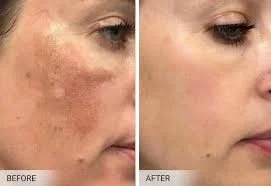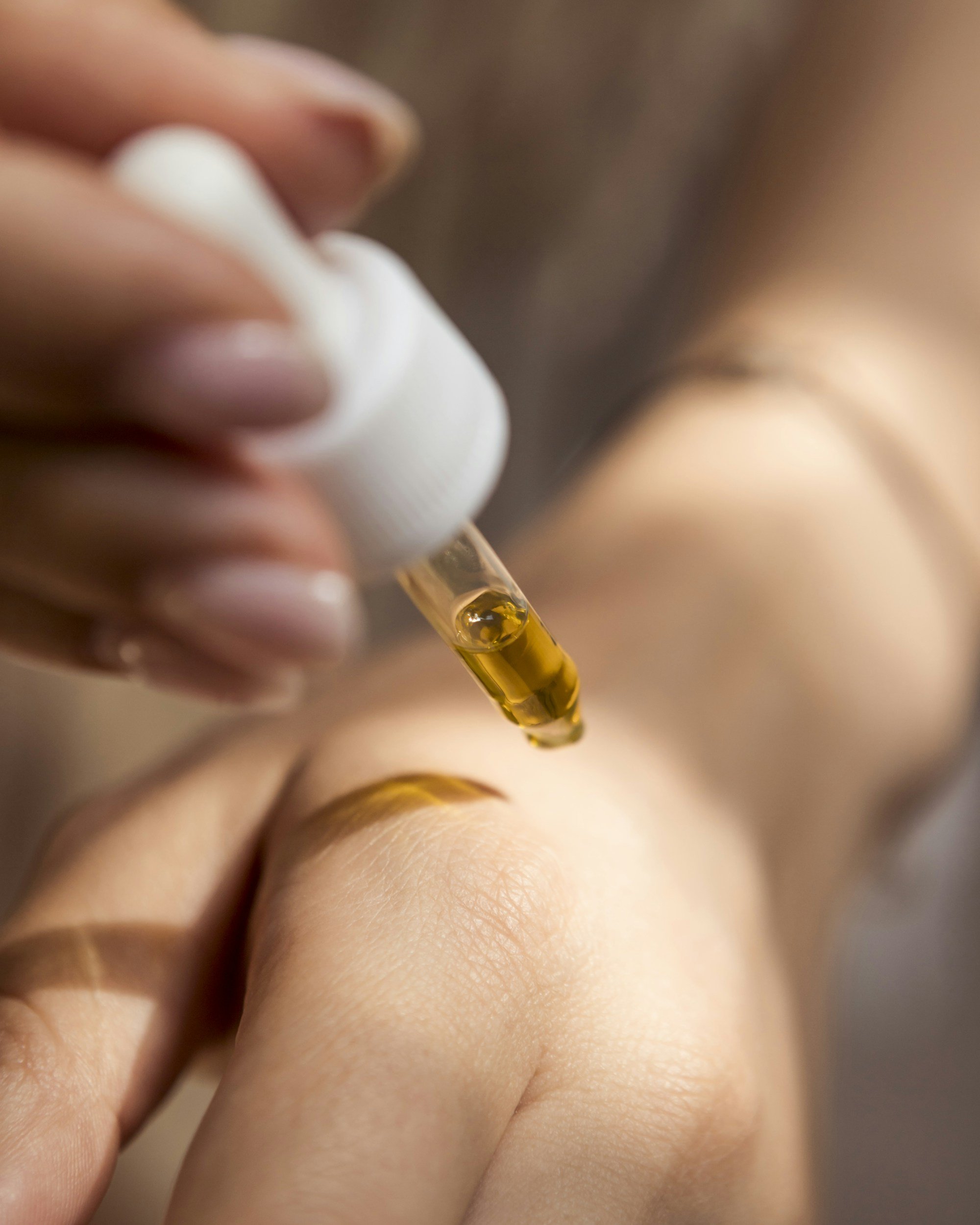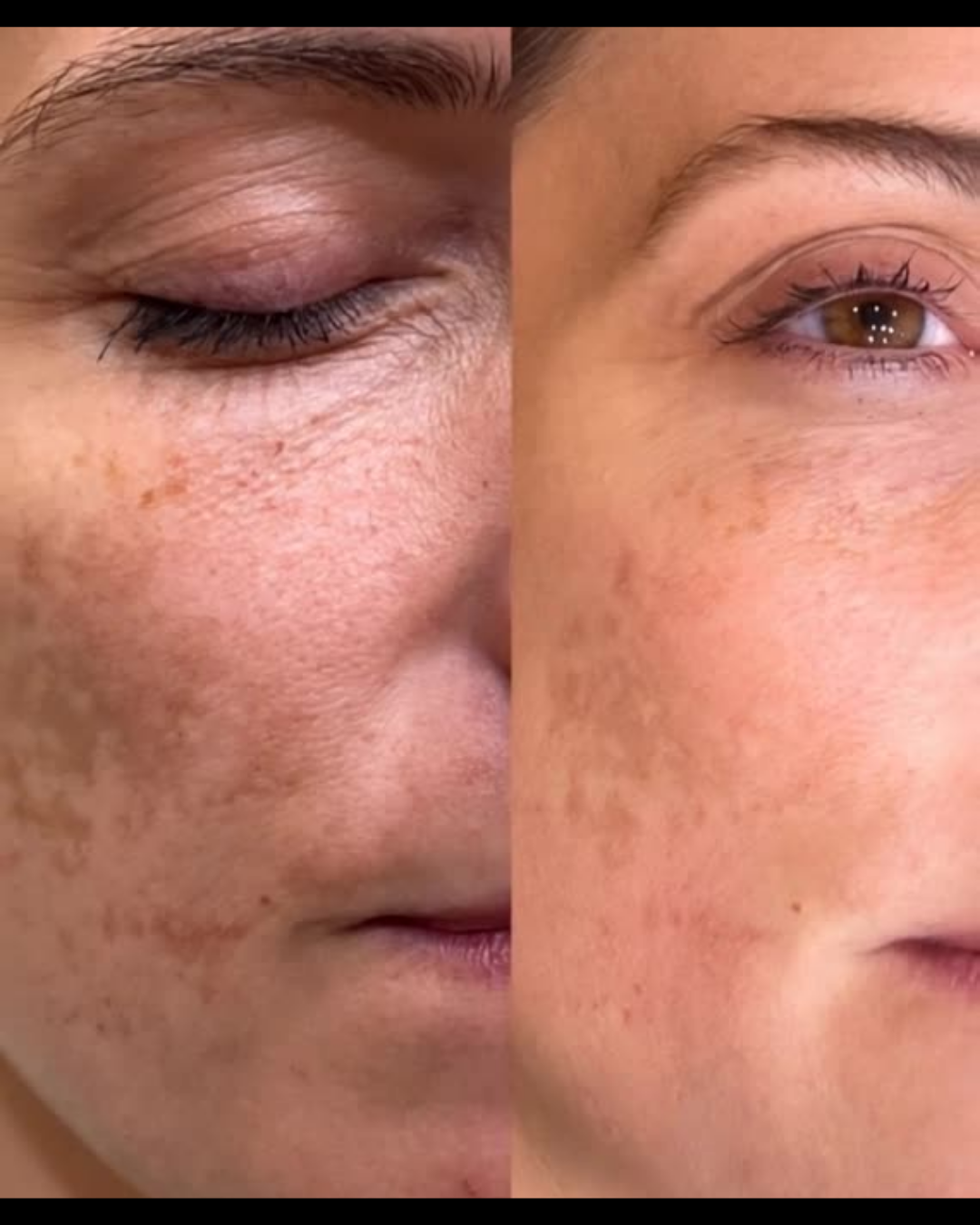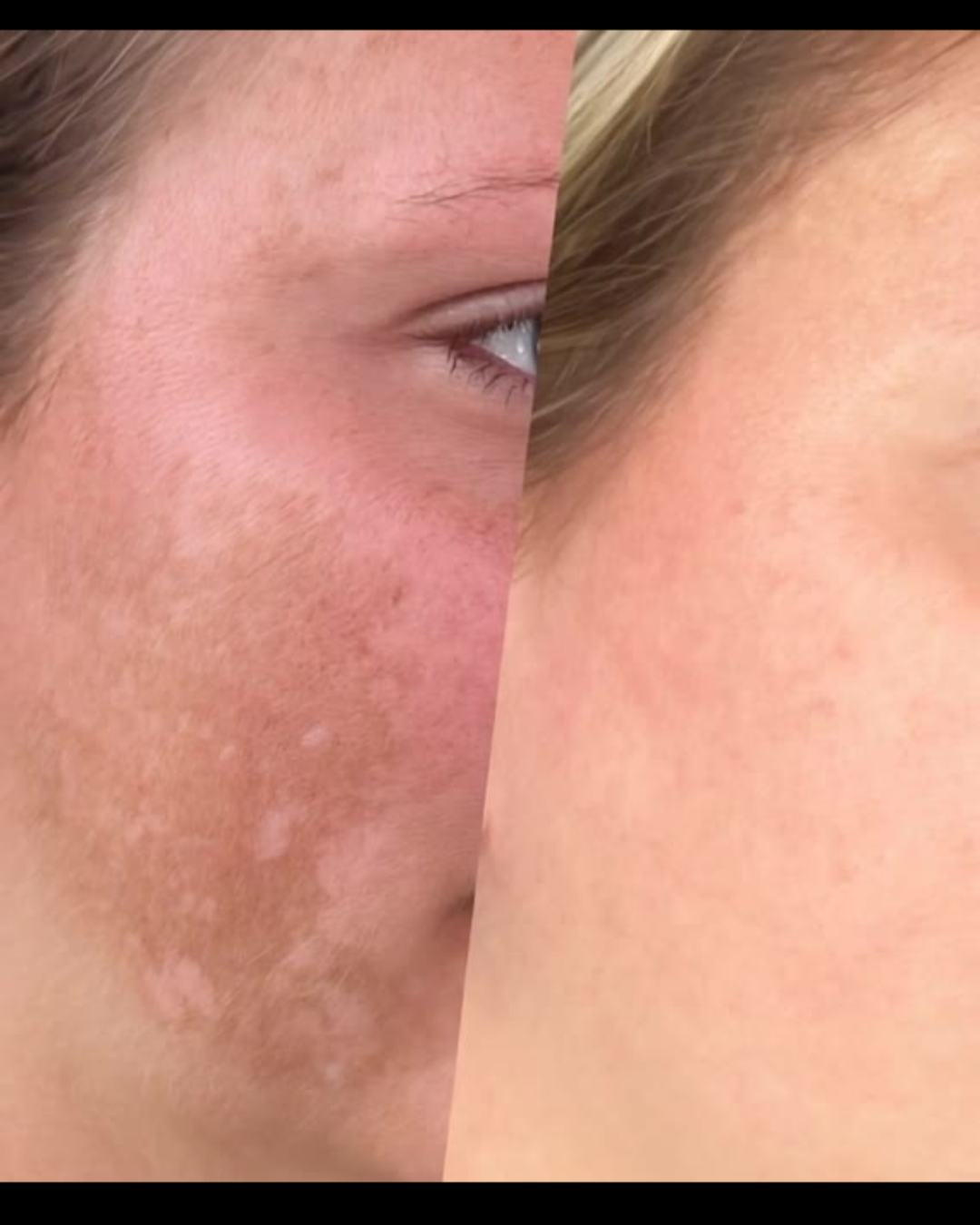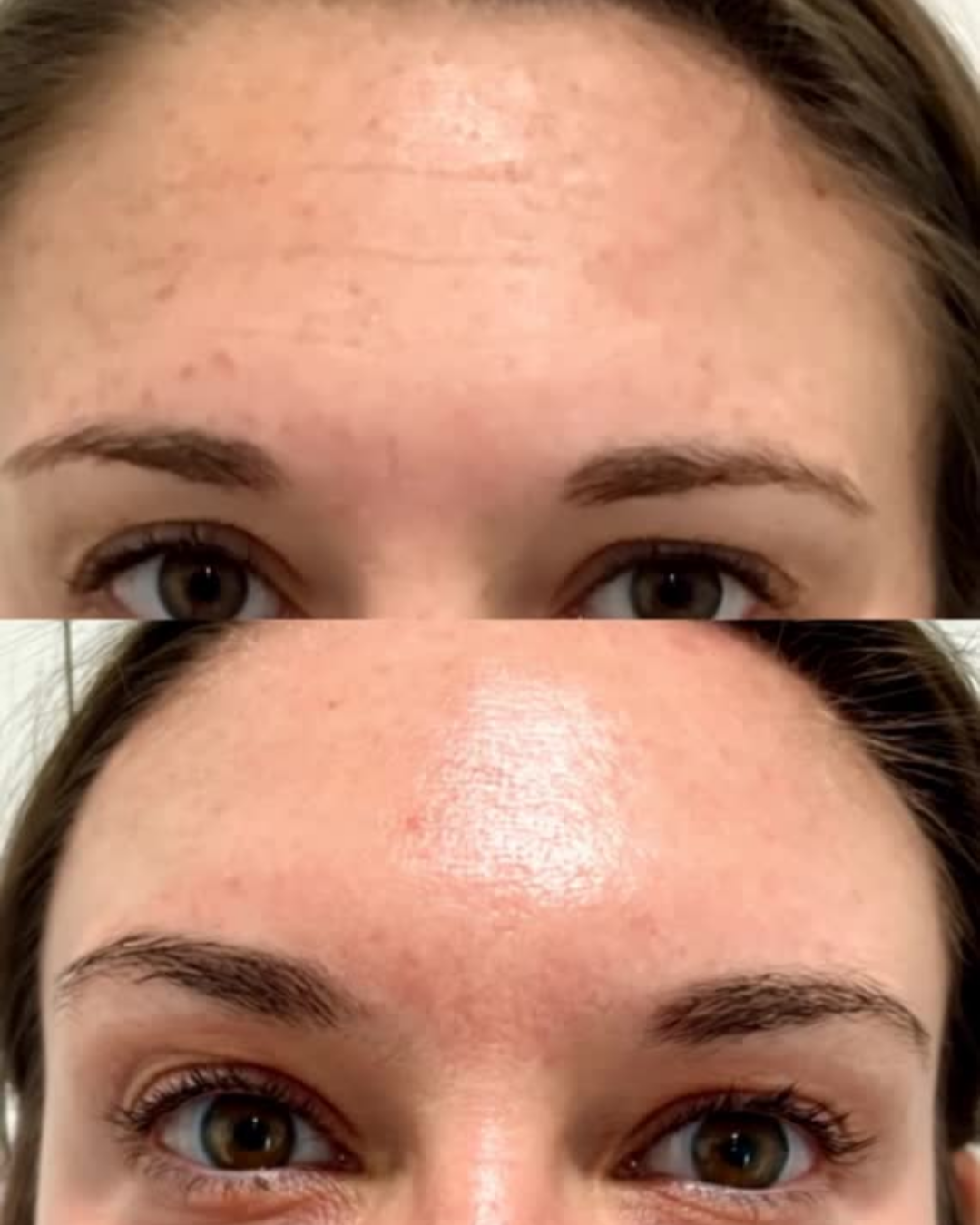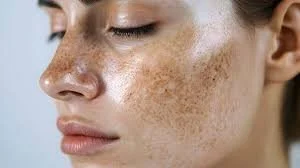Your Guide to Understanding & Treating Pigmentation
Pigmentation concerns are incredibly common, but the good news? There are more effective treatment options available now than ever before! Understanding what's causing your specific type of pigmentation is the first step toward achieving more even-toned, radiant skin.
What Causes Pigmentation?
Pigmentation occurs when melanin (your skin's natural pigment) is produced unevenly. Several factors can trigger this:
Sun exposure - The biggest culprit for most pigmentation issues
Hormonal changes - Pregnancy, birth control, or hormone fluctuations
Inflammation - From acne, injuries, or skin irritation
Genetics - Some people are simply more prone to pigmentation
Age - Natural aging processes affect melanin production
Types of Pigmentation
Melasma
Symmetrical patches, often on cheeks, forehead, and upper lip
Triggered by hormones and sun exposure
More common in women, especially during pregnancy ("pregnancy mask")
Post-Inflammatory Hyperpigmentation (PIH)
Dark spots left behind after acne, cuts, or other skin trauma
Can affect all skin tones but more noticeable on darker skin
Usually fades over time but can take months or years
Solar Lentigines (Age Spots)
Flat, brown spots from cumulative sun damage
Most common on hands, face, shoulders, and arms
Develop over years of sun exposure
Freckle pigmentation
Freckles & Ephelides
Small, light brown spots that darken with sun exposure
Genetic component, often fade in winter
Generally harmless and considered charming by many!
Important information I tell my clients
Pigmentation originates within the stratum Basale layer at the bottom of the epidermis (the 4th or 5th layer, depending on the area of the body) by cells called melanocytes. This is important as it is the bottom layer of the skin. It will require concentrated products with the correct dosage and application technique. In-depth clinical treatment that penetrates the skin.
Most importantly, it requires patience! there is no magic overnight cure. It’s just not possible. Clinical treatments will always need a course to be effective, and home care needs time to work and elevate that journey. If you need help with your pigmentation skincare journey, then get in touch and book a skincare consultation today. If you want to have a treatment with me in the clinic, book a clinic consultation here.
At-Home Treatment Options
Your daily heroes:
Sunscreen (SPF 30+) - Non-negotiable! Prevents new pigmentation and stops existing spots from darkening
Vitamin C serum - Brightens skin and provides antioxidant protection
Retinoids - Speed up cell turnover to reveal fresh, even-toned skin
Niacinamide - Helps regulate melanin production
Alpha Hydroxy Acids (AHAs) - Gentle exfoliation to fade surface pigmentation
Targeted brightening serums:
Targeted serums for pigmentation treatment
Kojic acid serums - Natural skin lightener that inhibits melanin production
Alpha arbutin serums - Gentle but effective alternative to hydroquinone, works gradually
Tranexamic acid - Newer ingredient that's excellent for melasma and stubborn pigmentation
Licorice root extract - Anti-inflammatory with brightening properties, perfect for sensitive skin
Azelaic acid serums - Multitasking ingredient that tackles pigmentation while being gentle
Vitamin C serums - Look for L-ascorbic acid or magnesium ascorbyl phosphate for maximum brightening
Hydroquinone serums - Available over-the-counter at 2% concentration for targeted spot treatment
Pro tips for success:
Consistency is everything - results take 6-12 weeks minimum
Always patch test new products
Layer products from thinnest to thickest consistency
Never skip sunscreen, even on cloudy days!
Professional In-Clinic Treatments
Chemical Peels
Light to medium depth peels using glycolic, lactic, or TCA
Removes damaged surface layers to reveal brighter skin
Series of treatments usually needed for best results
Microneedling
Creates thousands of tiny micro-channels in the skin to boost absorption of active ingredients
Stimulates natural collagen production while improving pigmentation
Can be combined with vitamin C, growth factors, or specialized pigmentation serums for enhanced results
Professional treatments use longer needles (0.5-2.5mm) for deeper penetration than at-home devices
Series of 3-6 treatments spaced 4-6 weeks apart typically recommended
Minimal downtime - expect mild redness for 24-48 hours
Perfect for all skin types and particularly effective for post-inflammatory hyperpigmentation
Can be combined with other treatments like chemical peels for comprehensive results
See our success stories:
From the clinic treatments and bespoke (and consistant) homecare
Laser Treatments
IPL (Intense Pulsed Light) - Great for sun damage and age spots
Prescription Treatments
Hydroquinone - Gold standard for pigmentation (prescription strength)
Tretinoin - Prescription retinoid for faster cell turnover
Custom compound creams - Tailored combinations for your specific needs
Advanced Options (be aware these carry intensive downtime and aftercare)
PicoSure/PicoWay - Latest generation lasers for stubborn pigmentation
CO2 laser resurfacing - For more significant pigmentation and texture issues
Combination therapies - Multiple treatments for comprehensive results
Prevention is Your Best Friend
Daily habits that make a difference:
Broad-spectrum sunscreen every single day
Reapply sunscreen every 2 hours when outdoors
Wear wide-brimmed hats and seek shade
Don't pick at blemishes or scabs
Use gentle skincare to avoid inflammation
Lifestyle factors:
Manage stress levels (stress can trigger hormonal pigmentation)
Get adequate sleep for skin repair
Stay hydrated for healthy skin function
Consider hormonal balance if melasma is an issue
When to See a Professional
Book a consultation if you have:
Pigmentation that's not responding to over-the-counter treatments
New or changing spots (always get these checked!)
Melasma that's affecting your confidence
Extensive sun damage
Questions about which treatment approach is best for your skin type
The Bottom Line
Treating pigmentation is absolutely achievable with the right approach and patience! Whether you start with gentle at-home treatments or jump straight into professional options, the key is consistency and sun protection. Remember, pigmentation didn't develop overnight, so be kind to yourself during the treatment process.
Every skin journey is unique, but with today's treatment options, clearer, more even-toned skin is definitely within reach. Here's to embracing your skin at every stage of the journey! ✨
If you need help with your pigmentation, then we can help you on your journey. Skincare is our specialism. Book an expert skincare consultation to talk with you and create a bespoke plan for your skin. Think of it like a skin lesson when you can learn facial massage, application techniques and 5-star practices to help you on your journey with a tailored skincare report & next steps.
Want to see us in clinic? Book your free clinic consultation here to help decide the best treatment pathway for you.
glass skin facial

